By the time Hugh Jackman signed on to play the character Logan in 2013's "The Wolverine," he was already on Hollywood's A-list and a recurring presence in Marvel movies. His first appearance came in "X-Men" in 2000, and his most recent was in 2017's "Logan" (not counting a joke cameo in 2018's "Deadpool"). In fact, Jackman's "Logan" holds the Guinness World Record as the longest running live-action Marvel superhero.
One movie in particular, "The Wolverine," remains a defining appearance by the character. Jackman tackled the role by getting in the best shape of his life; no small feat at age 44. Part of the credit for Jackman's physical metamorphosis goes to U.K.-based personal trainer David Kingsbury, who already had a reputation for shaping up actors for high-budget movies. Jackman and Kingsbury clicked in an initial meeting, and their first workout was set for 8 a.m. the following morning.
How to Get Jacked Like Hugh Jackman in Wolverine
It's always a challenge signing on to play a comic book character with a mandate to transform a mortal body into a superhero's in a matter of months. (Robert Pattinson's struggles bulking up for 2021's "The Batman" have been well publicized, for example.) And even among superheroes, Wolverine must cut an imposing figure on screen in order to be believed. If your claws and bones are made of an indestructible metal that can cut through any substance known to man, you can't be hiding a dad bod underneath your costume.
Fortunately, when Jackman came to Kingsbury for "The Wolverine," he was highly motivated and already in good shape, fresh off shooting "Les Misérables."

"He was very lean, but a bit smaller than usual," recalls Kingsbury. "The goals for 'Les Misérables' were to have him as lean as humanly possible while retaining the muscle mass and strength that the character needed."
For "The Wolverine," Jackman wanted to be both leaner and more muscular than he had been for any prior film roles. This was a tall order: Bulking up usually involves adding some body fat, while leaning out usually involves sacrificing some muscle. Jackman wanted it all—and he and Kingsbury had five months.
Says Kingsbury, "Hugh hadn't done much direct strength work prior to training with me. He tended to work in the 8-12 rep range. I always encourage low, 1-5-rep heavy work to stimulate myofibril hypertrophy. Then, after the heavy work is done, we move on to the higher rep schemes to encourage sarcoplasmic hypertrophy. By increasing your strength with the low reps, you increase your capacity with the higher reps, so I always plan heavy sets of the compound movements. The combination of the two styles brings the best gains."
What Was Hugh Jackman's Workout Plan for "The Wolverine"?
Kingsbury divided Jackman's training into two phases, a bulk and a cut, although the weight training didn't change all that much between them. Diet (discussed below) and cardiovascular training were the two primary joysticks differentiating the phases when it came to Jackman's body-fat levels.
The weight training was a classic application of progressive overload. Over the course of a four-week training block, the reps for the main lifts—barbell bench press, back squat, weighted pull-up, and deadlift—changed from week to week. The weight increased during each of the first three weeks. During the fourth week, the weight dropped to a point where Jackman could knock out 10-rep sets.

To arrive at the poundages used on a given exercise, Kingsbury calculated percentages of Jackman's one-rep maximum lift for that exercise. This handy calculator can help you figure out your 1RMs.
Here's a four-week sample of the workouts Jackman followed under Kingsbury's watchful eye:
Your four-week cycle begins with a simple 4x5 power plan and plenty of assistance work. (Sideburns are optional.)
Professor X says, "Don't underestimate the power of low-rep living, Logan. It's crucial for building muscles as strong as they look."
Here we go, up over 90 percent of your 1RM! This is your week to tweet a bar-bending photo to all the haters.
Let's turn up the reps to put some meat on your X-frame! This is a serious hypertrophy week, so get in your calories. Then, to turn right back around and start again with Week 1.
If you remember, Jackman had five months, not four weeks, to prepare. So, what changes from one four-week cycle to the next?
"Add 5-10 percent to your working one-rep max," says Kingsbury.
What Was Hugh Jackman's Diet for "The Wolverine"?
Training alone wasn't going to turn Jackman into Logan. Diet was key!
Armed with the specific goal of getting Jackman jacked, Kingsbury designed the star's meal plans with strict attention paid to both calories and macronutrients.

"The food varied through the different stages," says Kingsbury, "but we followed one nutrition principle throughout: We had carbs on weight training days and went low-carb on rest days."
Here's an example of what Jackman consumed on a training day:
 Eggs
Eggs
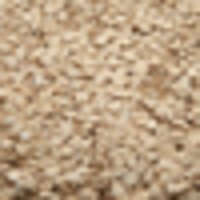 Oatmeal
Oatmeal
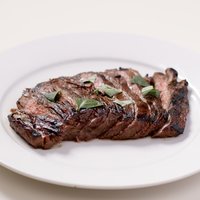 Steak
Steak
 Sweet Potato
Sweet Potato
 Broccoli
Broccoli
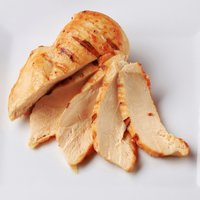 Chicken
Chicken
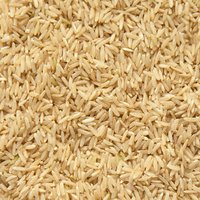 Brown Rice
Brown Rice
 Spinach
Spinach
 Fish
Fish
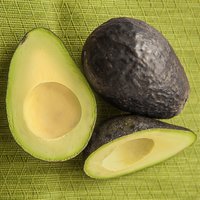 Avocado
Avocado
 Broccoli
Broccoli
What Supplements Did Hugh Jackman Take for "The Wolverine"?
When attempting a transition of this magnitude, Jackman needed every edge he could muster. Here are the supplements he took to support his workouts and diet.
- Pre-workout: To get Jackman amped before and during his workouts, Kingsbury had him take a pre-workout before each training session.
- Creatine: Kingsbury had Jackman take creatine during the bulking phase and then removed it during the cutting phase.
- Branched-chain amino acids: Jackman took 5-10 grams of a BCAA product pre- and post-workout. He trained fasted in the morning, so the BCAAs helped preserve muscle.*
- Carnitine: While Jackman was cutting, Kingsbury had him take carnitine to help metabolize fatty acids.*
*These statements have not been evaluated by the Food and Drug Administration. This product is not intended to diagnose, treat, cure, or prevent any disease.

